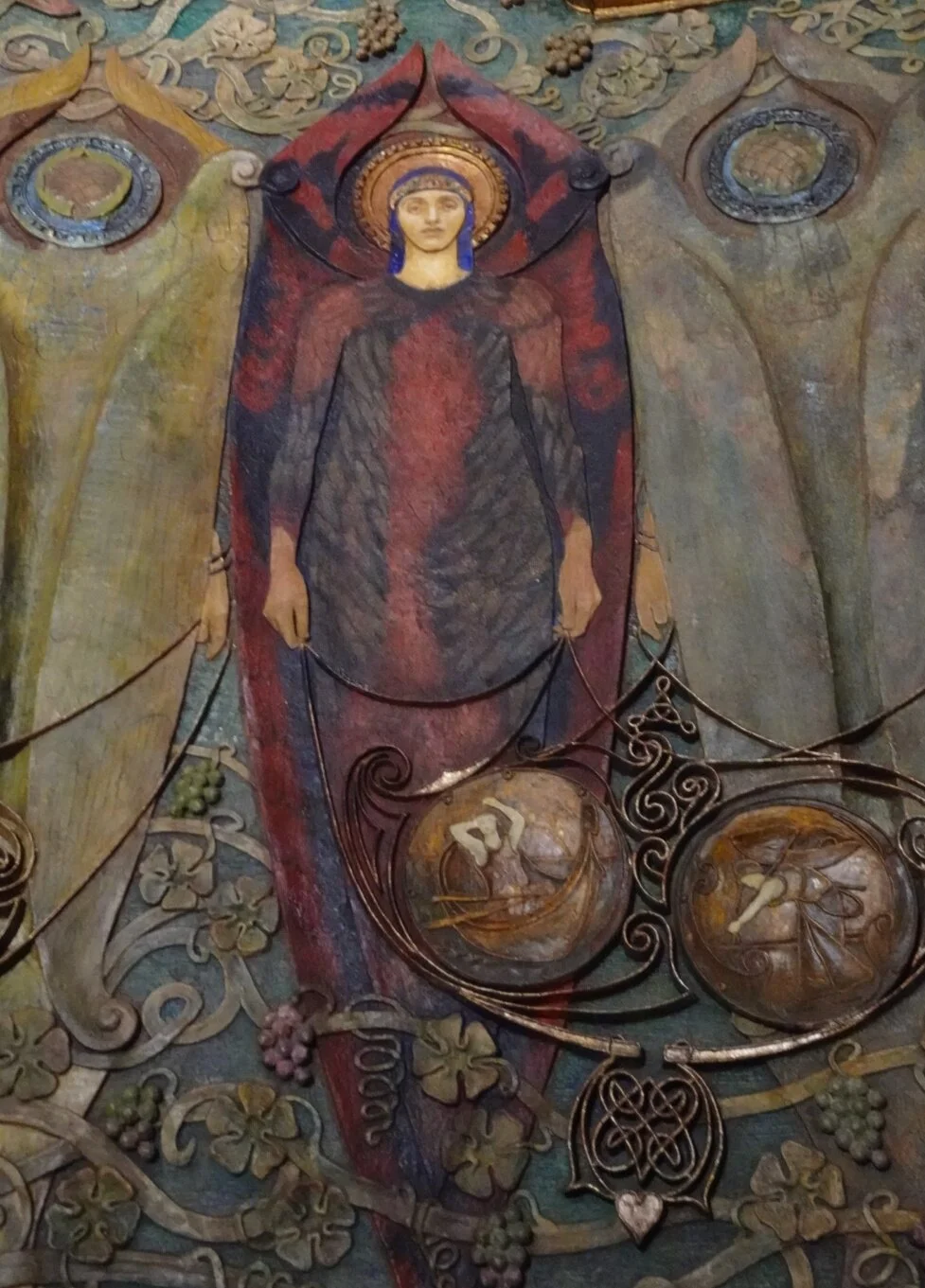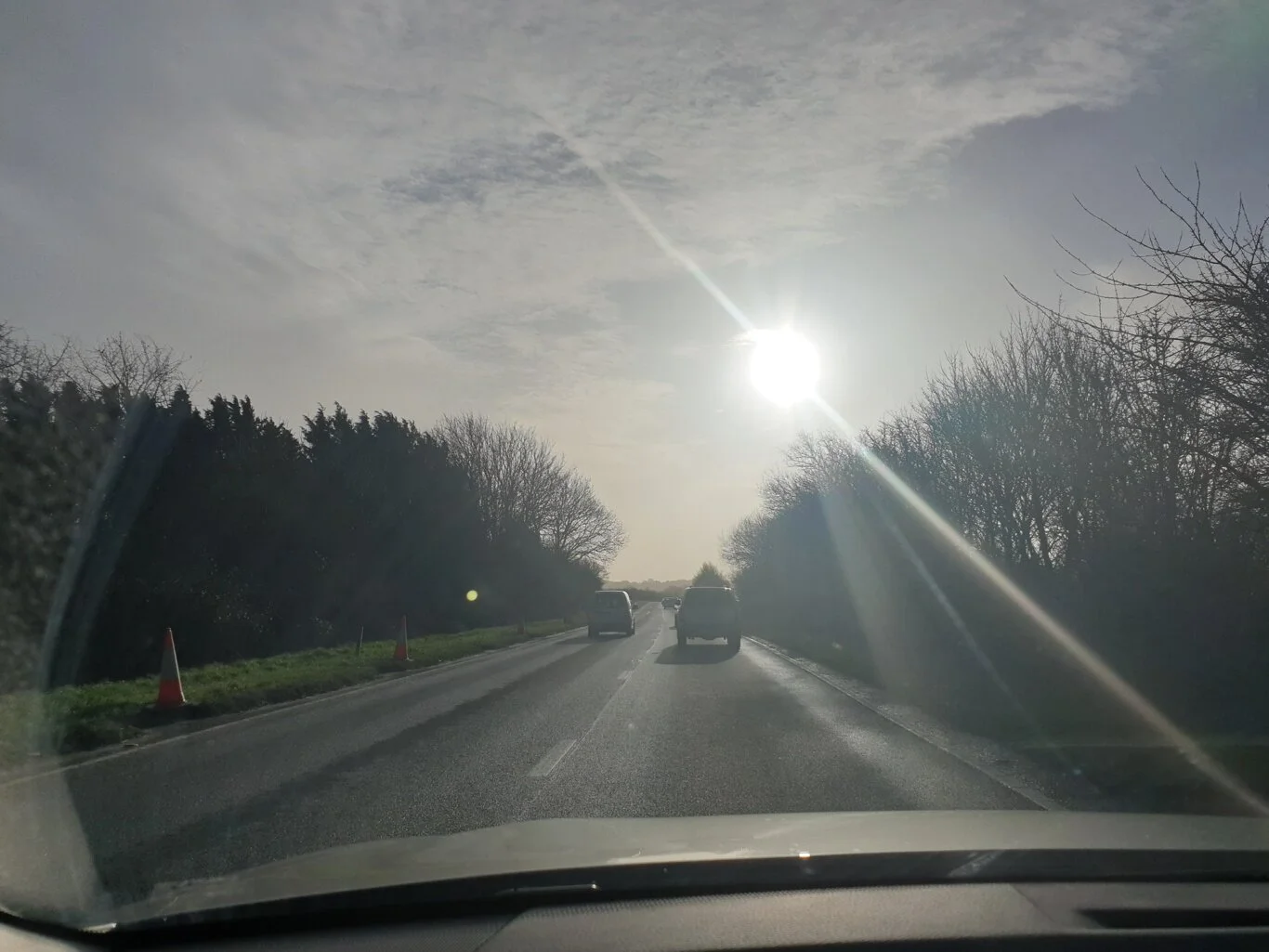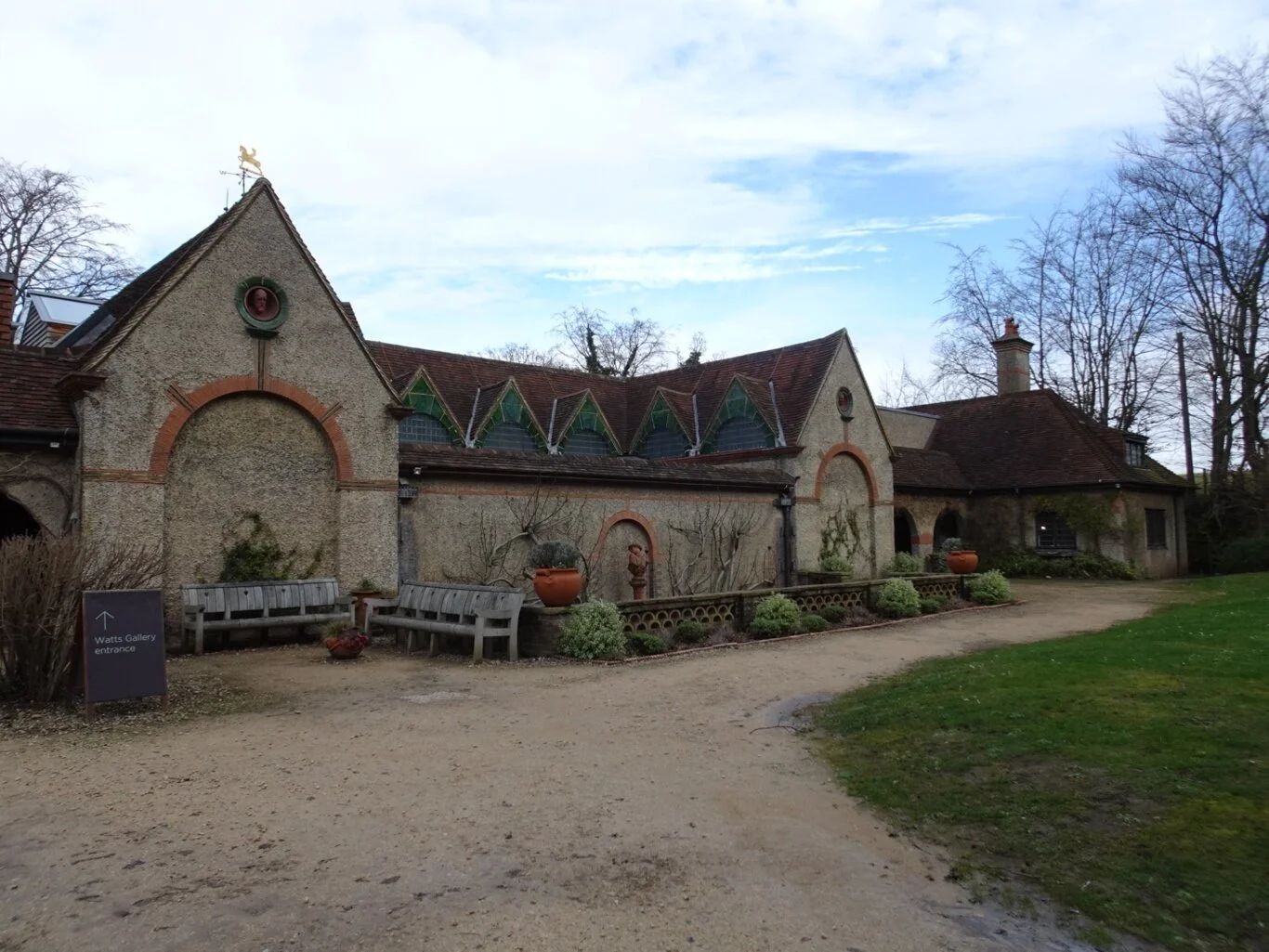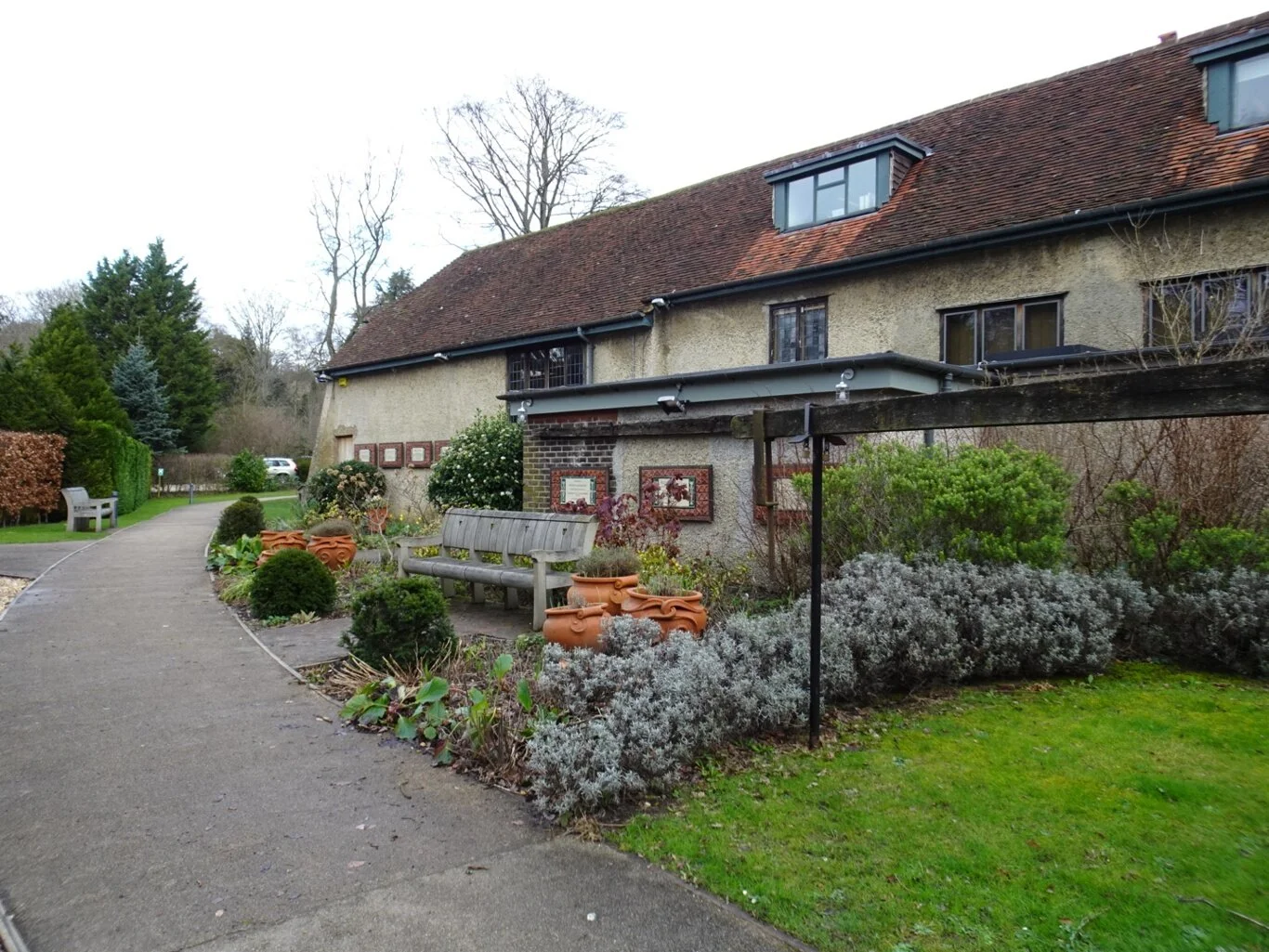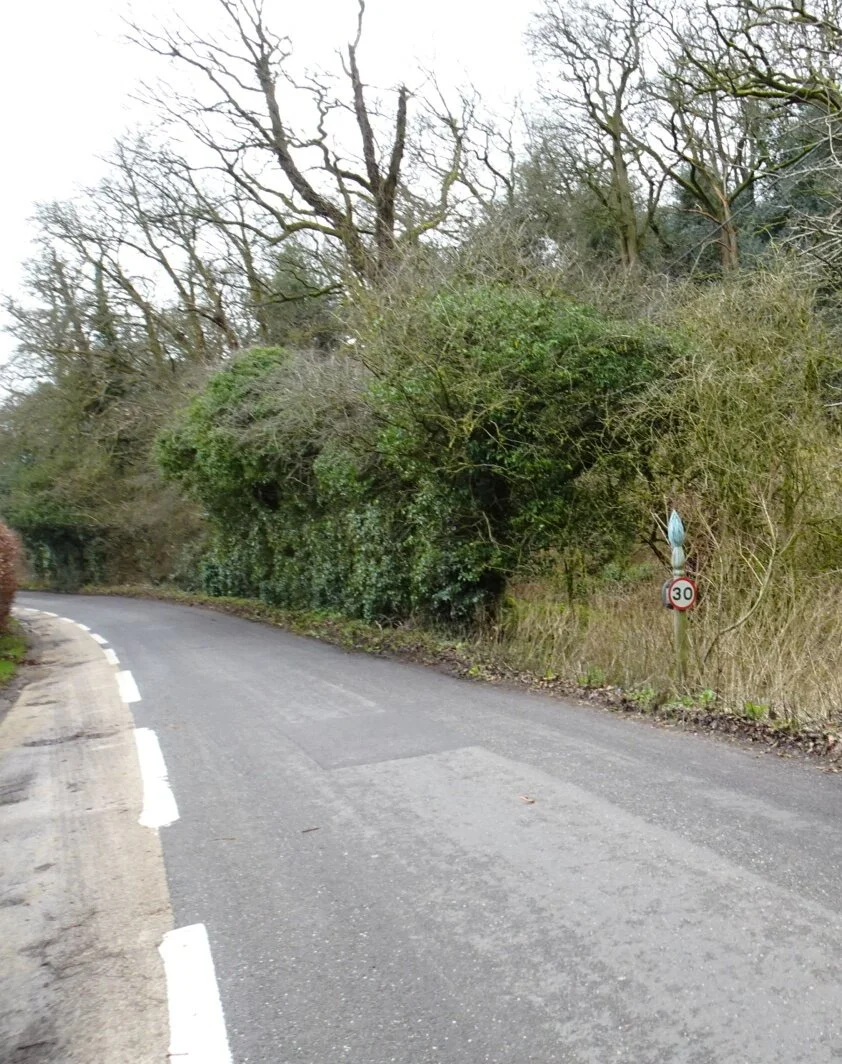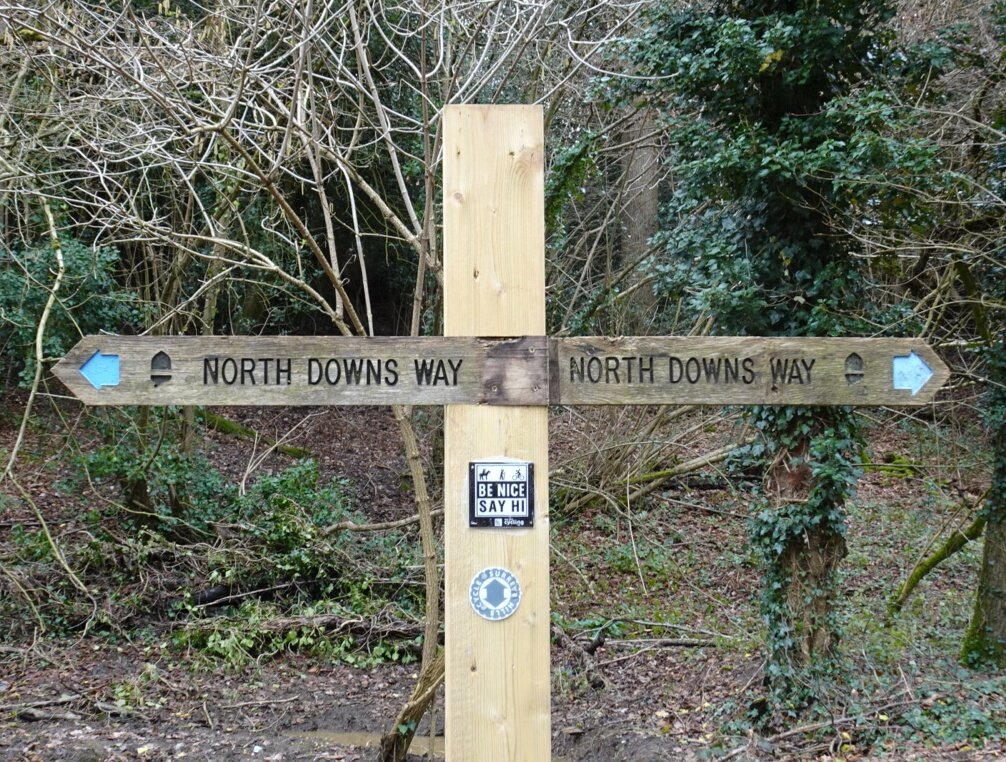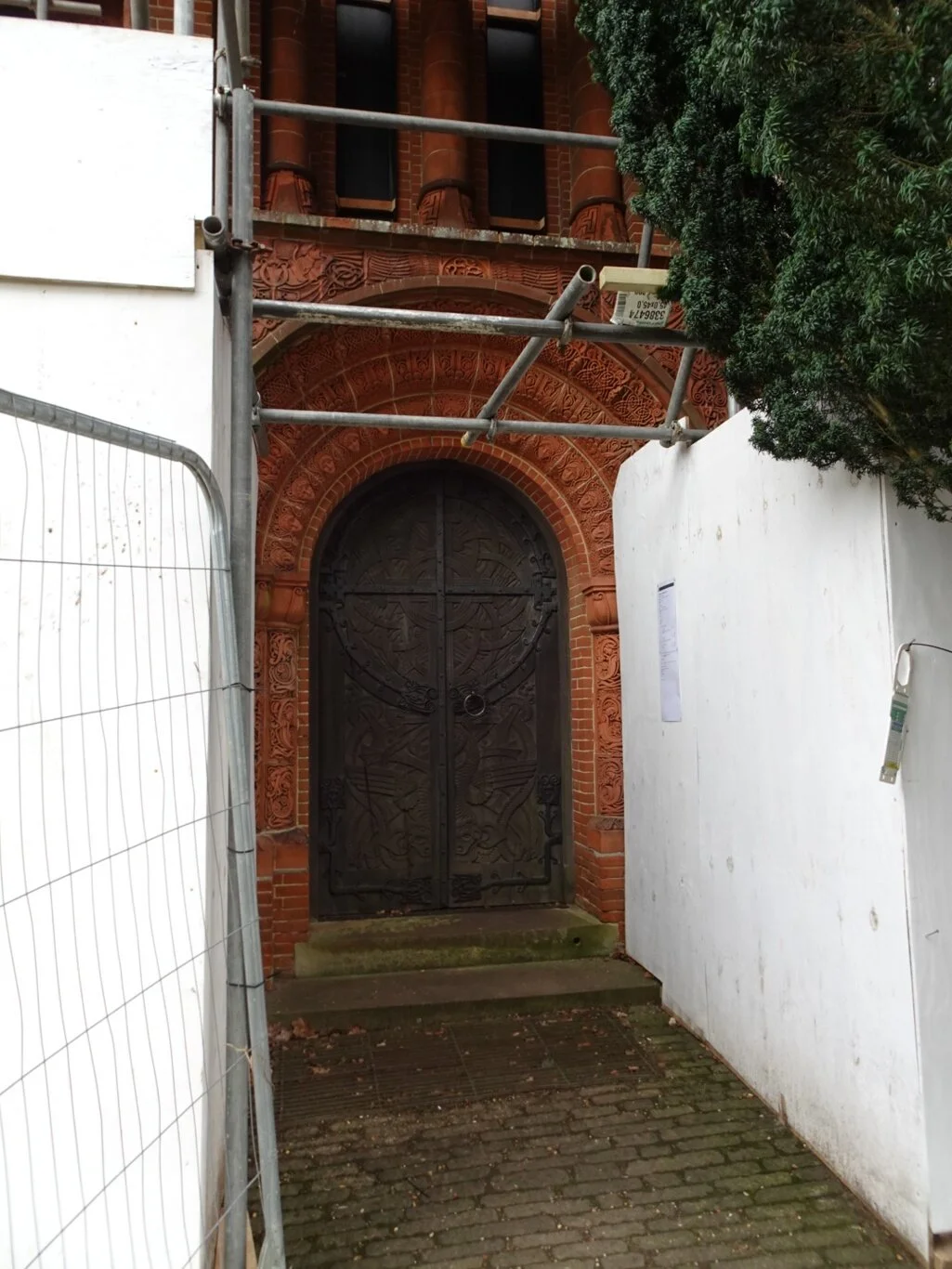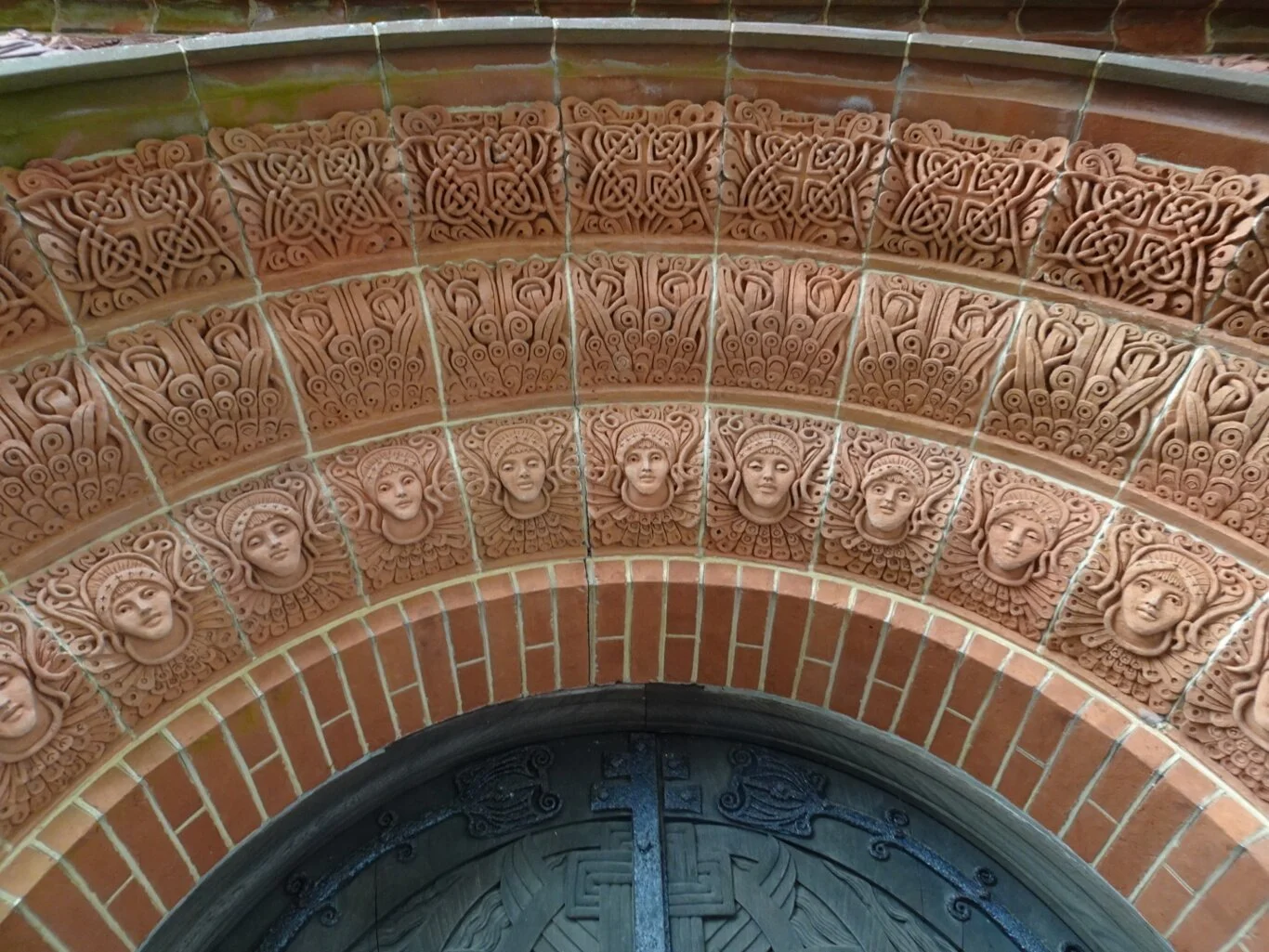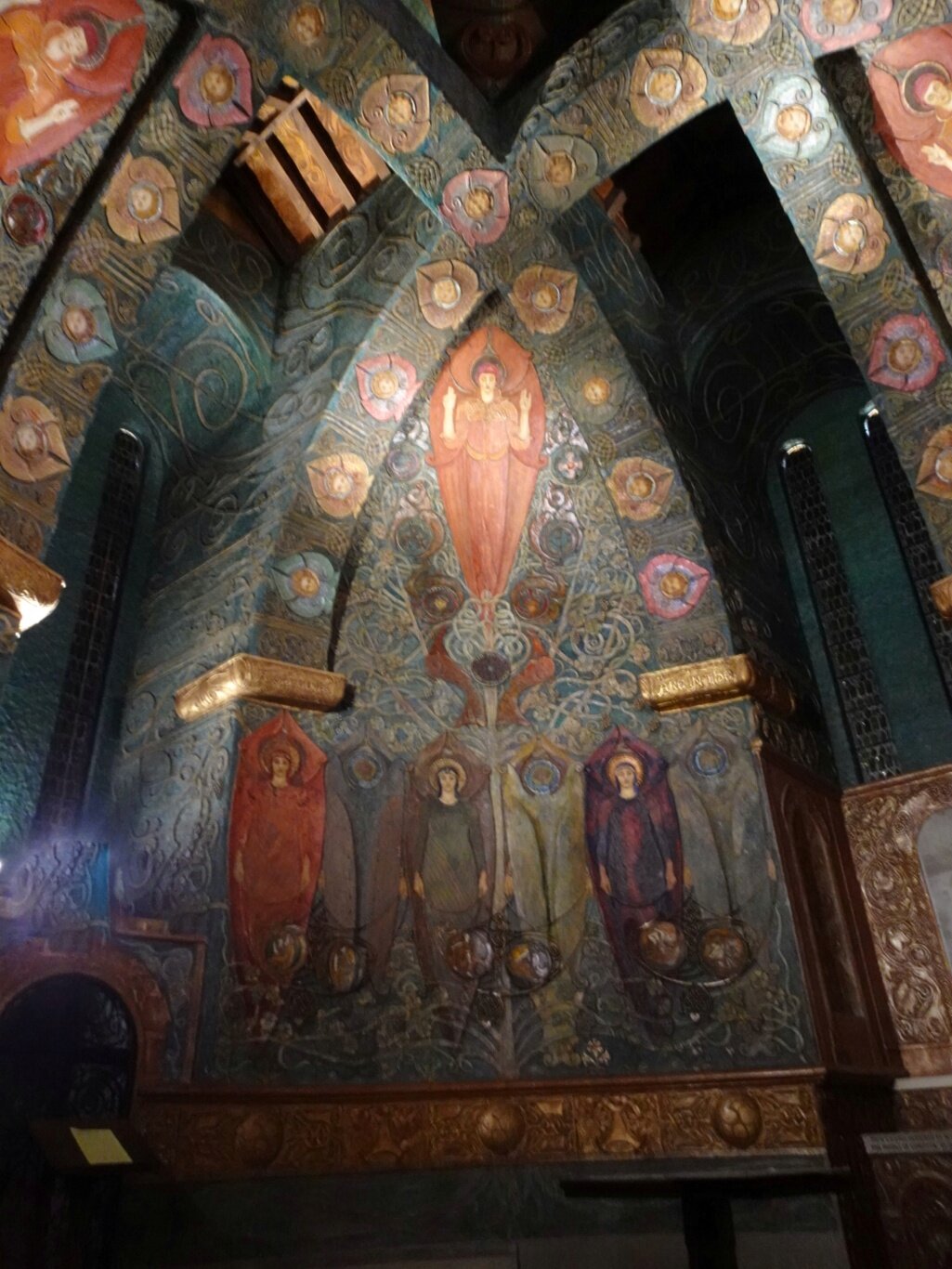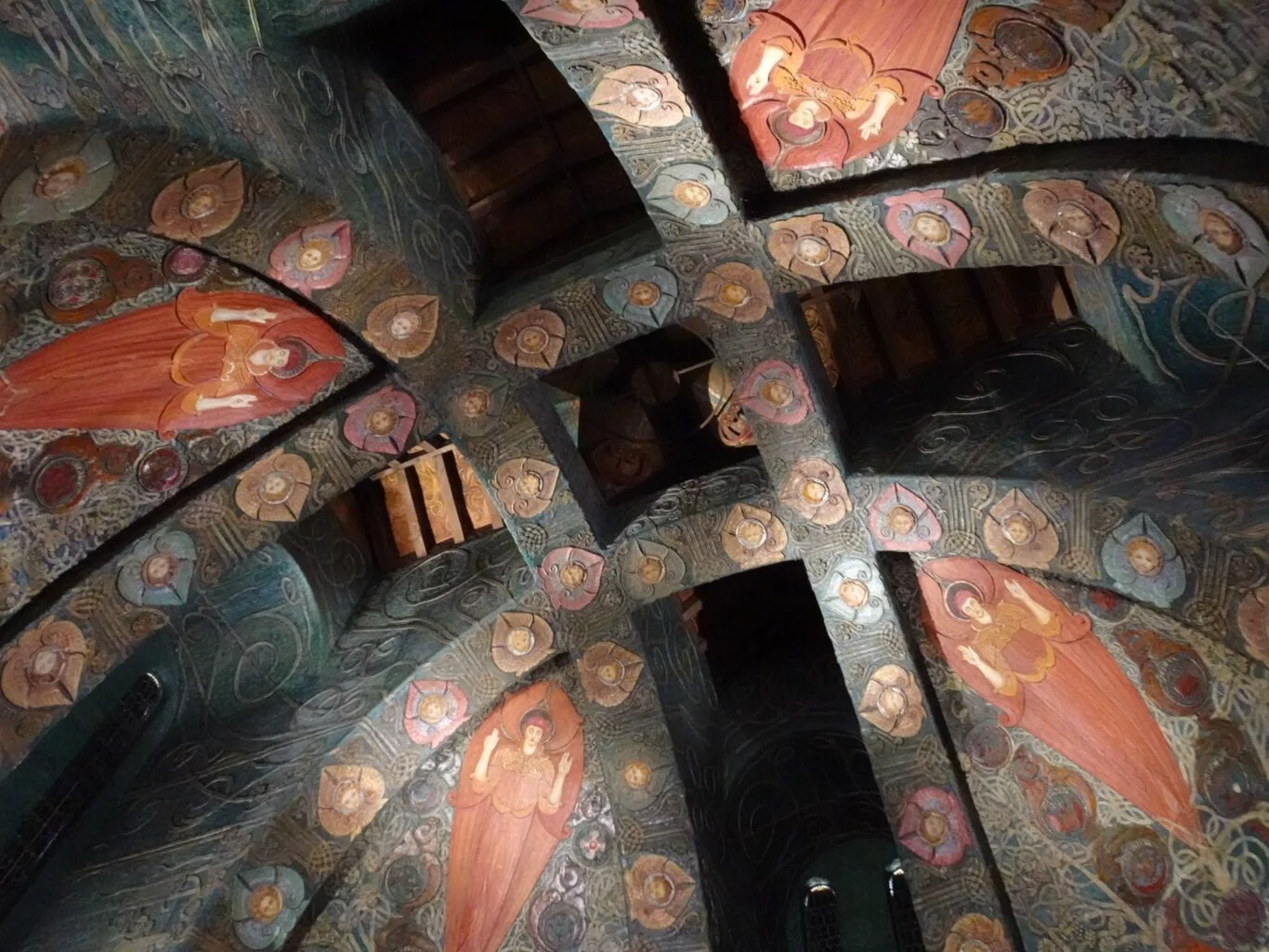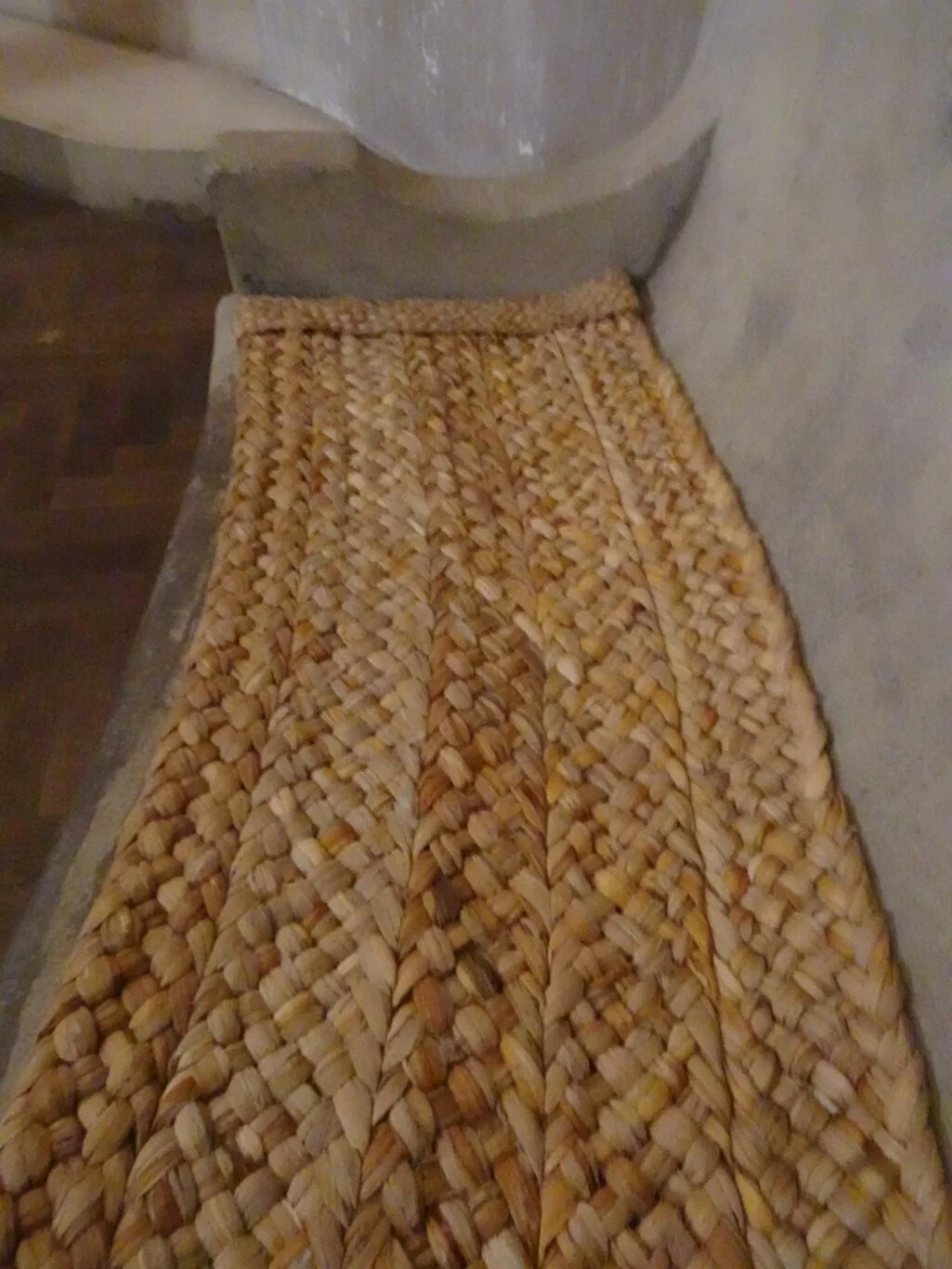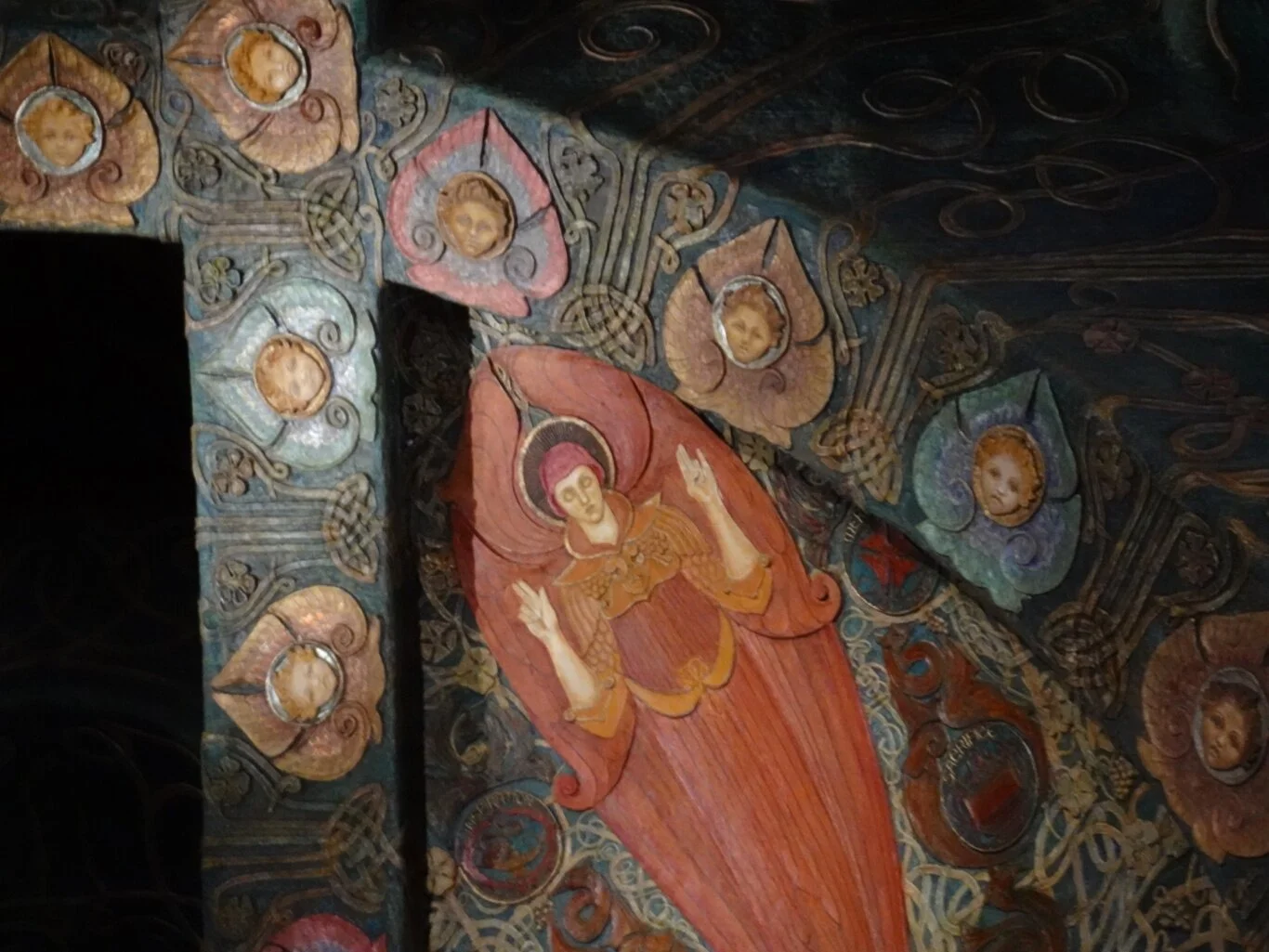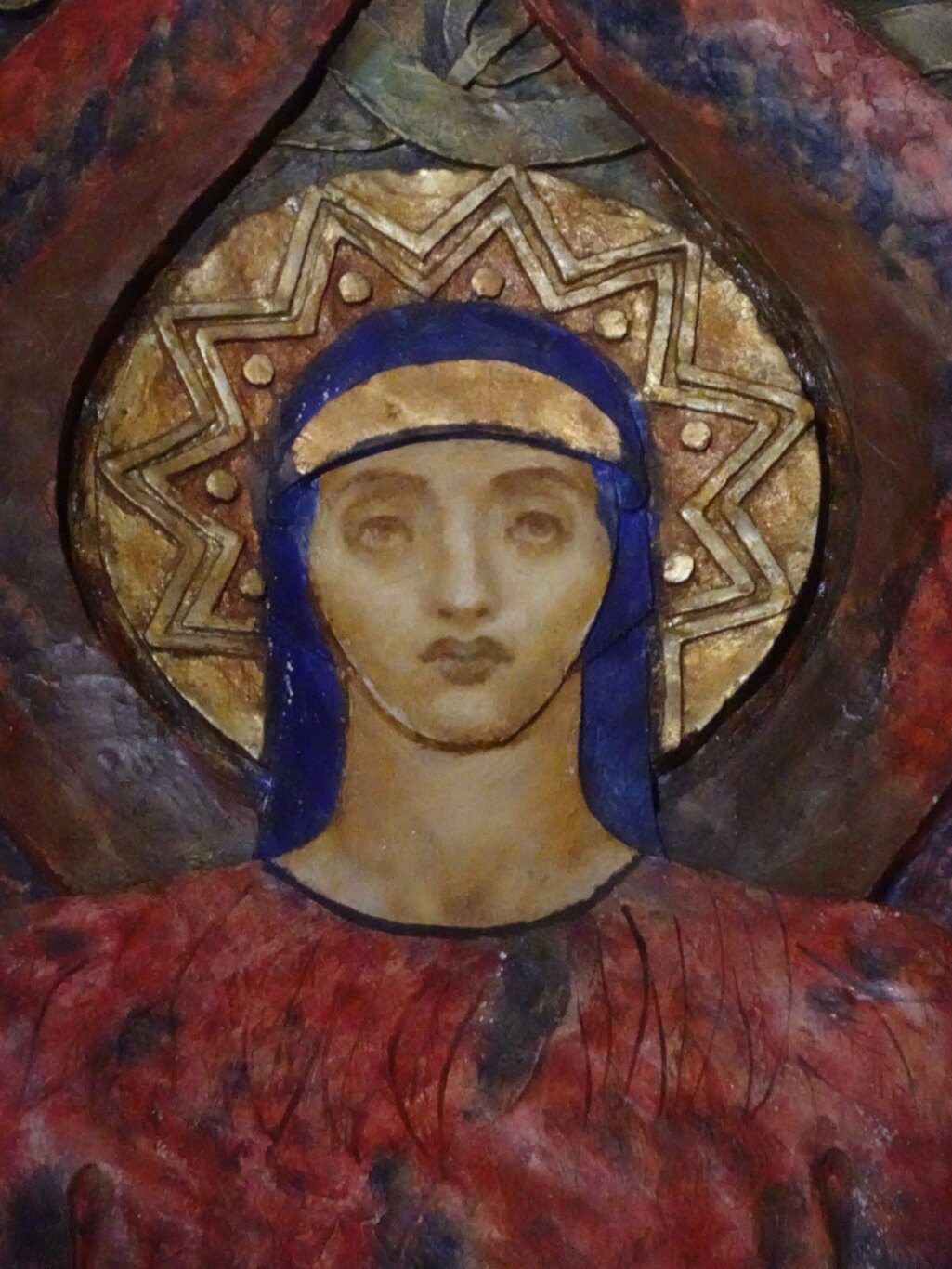Seven Counties
It wasn’t a good day to be driving east. The low, Winter sun was dazzling, reflecting off wet patches on the road and blindingly so from the mirrors of the cars in front of us. I’m grateful that I wasn’t doing the driving as we checked off the counties on the way. We started in Gloucestershire and were soon in Wiltshire, after which Berkshire and Hampshire soon followed. We were heading towards The Sunshine Coast of East Sussex, but had spotted the Watts Gallery on our route so it was in Surrey where we made our first stop.
We bought our tickets online, feeling quite excited by the prospect of this Artist’s Village, hoping that we wouldn’t feel shortchanged by the need to continue our journey before we’d seen it all.
Considering it was a Monday morning in February, the place was quite busy. We began by finding the Watts Gallery, because after all, that was mainly what we’d come to see. The interior of the stable block gallery was rather more lavish than the outside prospect suggested, but you’ll have to believe me, because no photographs were permitted inside. The art was large and well explained and though we both made independent progress through the half dozen rooms we reached the same conclusion: we were not as enchanted as we had expected to feel.
Why might that be? We had, after all, seen plenty of GFWatts’ work in galleries here and there and thought we knew what to expect. But we found much of the work on show here to be indistinct and lacking crisp detail and evidence of observation. The “other” exhibit was of William Orpen’s work and we immediately perked up when we saw his lively portraits and clever characterisation. I especially liked the four sketches which accompanied his Homage to Manet, demonstrating the background research and sampling process that contribute to achieving a successful end result.
Feeling slightly crestfallen then, we made our way back to the cafe, where surely a bite to eat would perk us up no end! Here was the answer to the question about the full car park - this was most certainly a “destination cafe”, and both the Welsh Rarebit and the Old Spot Sausage sandwich hit the spot perfectly.
We hummed and hawwed a bit about what to do next. Should we go to the Watts’ house, where his studio was to be found but which wasn’t completely open to the public, we were advised. Or perhaps visit the chapel, designed by Mary Watts, currently under restoration and covered in scaffolding? Both involved a bit of a walk along a narrow road and the dark clouds were threatening.
Oh come on! Let’s step on it and head for the chapel! As we went, we passed the signpost with a cute message pinned to it: “Be nice, say Hi!”
The chapel was indeed completely enveloped in white plastic and the workmen were just returning from their lunch. A sneaky peek through an open door gave a hint of what we were missing.
As we turned the corner and went towards the door, we got a better look.
Wow. Before stepping inside, I simply had to stop and take closer look.
The exquisite detail and craftsmanship in these brickwork panels was awe inspiring and made me wish we could see the complete exterior. Never mind…let’s go inside.
We opened the door and found it completely dark inside, noone else was there. I stepped inside, slightly hesitating and looking for a light switch but suddenly, the motion activated lights came on.
We gasped when we saw the circular chapel in all its glory, every square inch a feast of colour, texture and pattern.
The domed ceiling was where the four sections intersected, each section divided by all those small faces. Were they all the same face, or were they different?
The only seating was the bench style ledges around the perimeter of the chapel, each one lined beautifully with a handmade rush mat. I was happy to sit and stare a while - and take photographs of course.
From here, I decided that each face was different from the others, though possibly, the four angels are identical quadruplets!
The trio of figures beneath each angel were so clearly three dimensional and made of sections overlaid on each other. I found it quite hard to capture this in a photograph - my best effort above. Mary Watts had gathered groups of villagers together to create the sections I read - what a fascinating project to be involved in!
It was only whilst checking this last bit of information this evening that I discovered the most fascinating fact of all: the whole chapel had been a village project and, according to Wikipedia, every person in the village had played their part. Doesn’t that make that stunning detail around the entrance all the more impressive?
It was only in that article that I discovered Aldous Huxley is buried in the churchyard too - most certainly overshadowed by an assortment of builders’ paraphernalia today, sadly.
One last question, then: shall we go to the house?
We decided to leave on a high, not wanting to overwrite the memory of the chapel in any way. We made our way back to the car and continued on our way, through West and East Sussex to Eastbourne, where the weak February sunshine almost convinced us of the label “The Sunshine Coast”.
Let’s hope that tomorrow’s weather will confirm it.







